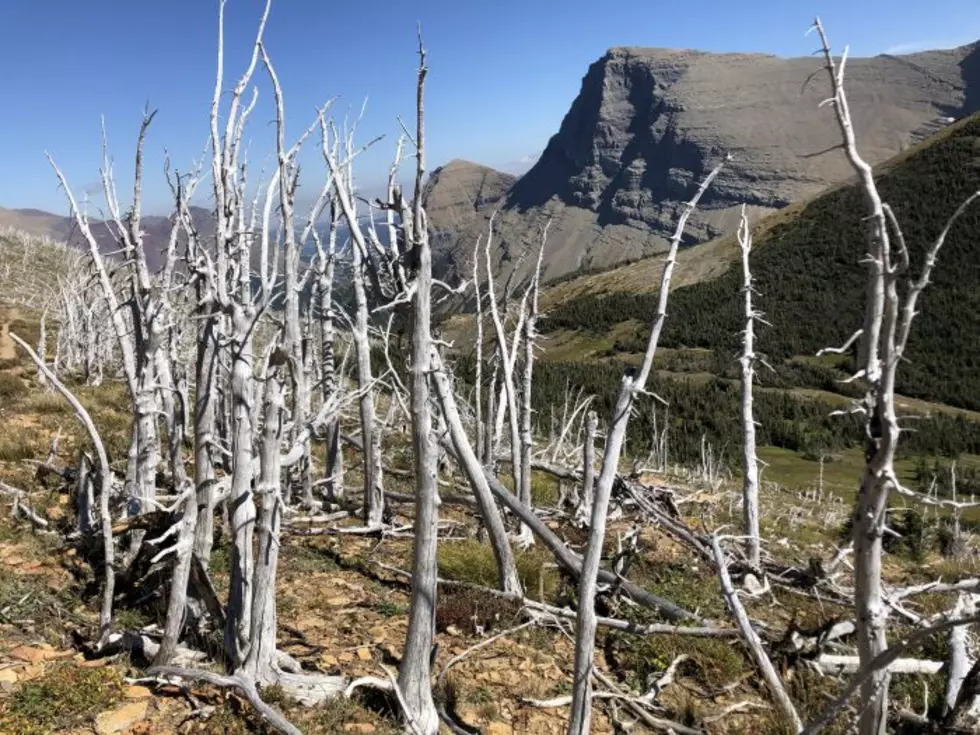
Group sues U.S. Fish and Wildlife for not protecting white bark pine
The Center for Biological Diversity has launched a lawsuit against the United States Fish and Wildlife Services for not listing 11 critically at-risk species under the Endangered Species Act, including the white bark pine tree found in Montana.
For years, the white bark pine tree has been under attack from two natural threats, including blister rust, a deadly disease that is spread through the wind. The white bark pine is also plagued by beetle kill, which has been increased due to climate change.
White bark pine trees are a species of tree found in high elevations, almost at the timber line. However, they provide food and habitat for other endangered or critical species like the grizzly bear or the Canadian lynx.
Fundamentally, the USFWS agrees with the Center for Biological Diversity that the white bark pine tree and 10 other species scattered throughout the country are at-risk and because of that, face the very real threat of extinction. However, the lawsuit alleges that instead of enacting protections for the species, the federal agency appears to be in an indefinite holding pattern.
But scientists and advocates say that the agency can’t wait without likely dooming the species.
White bark pine trees are smaller trees and critical to an alpine ecosystem that is under threat from climate change. In addition to blister rust, the warming temperatures mean that beetles that can attack many types of trees are going through two life cycles per season, meaning their destruction is magnified, said Noah Greenwald of the Center for Biological Diversity. Cold, hard freezing also helps kill off and reduce the beetle populations, but with warmer winters and less freezing, the beetle population is thriving and taking entire forests with it.
“These trees and animals who depend on them are literally getting pushed off the top of the mountains,” Greenwald said.
The United States Fish and Wildlife Service does not comment on pending litigation.
The white bark pine is part of a lawsuit that includes other species such as the round hickorynut, the Puerto Rico harlequin butterfly and the Suwannee alligator snapping turtle.
White bark pine is spread across the northern and northwest states, including Montana, Oregon, Washington, California, Idaho, Wyoming and Nevada.
Blister rust was an introduced disease and the tree has few defenses. Greenwald said that scientists are trying to find trees that have shown a resistance to the disease and create varieties that are resistant. But, with dwindling populations and climate change, it’s a race against the clock, he said.
Greenwald said the agency has been slow to respond, first acknowledging the problem in 2008.
And, history shows how certain trees, once abundant, can nearly be wiped out. For example, Greenwald said that chestnut trees dominated the eastern portion of the United states, only to be nearly wiped out by an introduced disease.
He said that once the Fish and Wildlife Service has made a determination that a species needs to be protected, a recommendation done by following the science, he said the law gives the agency a year to officially take action, but, that action has stalled.
Greenwald said that during the past several administrations, the number of species needing protection has grown, in large part due to climate change, but listings have slowed. He said part of the problem is the massive bureaucracy and the small budget.
He points to 66 species that the federal government has failed to act on in 2021. The Endangered Species Act said that listing species and critical habitat requires a process of less than two years, but the Center for Biological Diversity said it takes the federal agency 12 years to act. The CBD counts 47 species that have gone extinct waiting to act.
“We have to consistently sue to get the federal government to follow the Endangered Species Act,” Greenwald said. “FWS has built up a terrible bureaucracy for making these decisions where there’s often more than 20 people deciding this instead of just listening to the best available science.
“Scientists are raising the alarm bells that we’re in an extinction crisis and they should be leading the effort to save species, but to see them missing deadlines and dragging their feet is frustrating. Saving species, that’s their mission.”
